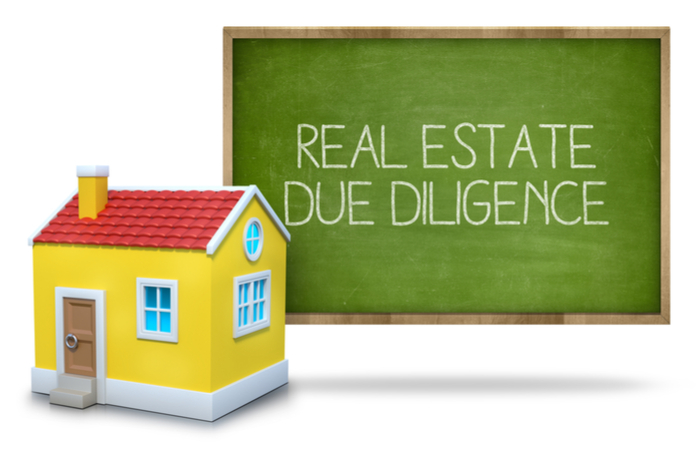
A due diligence period in real estate is one of the most critical times in any real estate transaction. But many buyers cut corners in the real estate due diligence process in their haste to have their bid accepted. Before buying a foreclosure or bank-owned property, thorough due diligence can help you avoid legal and financial mistakes and make informed decisions. Here are 10 due diligence real estate steps you shouldn’t skip when buying foreclosure & bank-owned properties.
Find Foreclosures Properties on Auction.com
1.Do a title review. Always get a preliminary title report on any foreclosure property you’re interested in buying and look for any secondary liens or tax liens. Make sure there aren’t any hidden liens or encumbrances on the property. A title search helps verify that the property is really on sale and has a clear title.
2.Inspect the property thoroughly. Always follow the law, which in most cases prohibits you from trespassing or entering property under certain conditions or without consent. Accordingly, you may not be able to get inside a foreclosure property that’s still occupied. But if you can, and ensure you act lawfully, you may seek to have a licensed professional inspector review the house for evidence of structural defects, water damage or other major problems.
But most importantly, make sure the plumbing, HVAC, and electrical systems areis functional.
What if you can’t inspect the property, other than driving by it? For the properties listed on Auction.com, once you have an account and find potential real estate you’re interested in, you can access its due diligence documents from its Property Details Page. Be sure you’ve read and understand all these documents before the auction.
3.Consider the surrounding property and neighborhood. Don’t confine your inspection to the structure itself. Look around at the landscaping. Does the property back up against a bank that has no vegetation? Will the drainage work in the event of a heavy storm?
Check out the surrounding neighborhood as well, as its condition can affect the value of your real estate. Do you see well-kept lawns and active streets? Or do you see abandoned properties in the area?
4.Examine recent sales activity. Look at how many days homes have stayed on the market. Are properties moving quickly or languishing? What are the neighborhood trends related to buying vs. renting? How many of the homes sold were distressed inventory? On Auction.com, you can find some of these pointers in the Property Information Report, which may be available on the property details page of the property you’re interested in. Too many sales overall could suggest that people are leaving the neighborhood—see if there’s an underlying reason why.
5.Review price trends. Are they going up? Have they plateaued? How do they compare to what they were during the last peak? That information should give you an idea of whether property values are going up or down, and help you figure out what you should be spending.
6.Find out how many homes in the area are in foreclosure. Too many foreclosures in any area may suggest price weakness over the near term. Are there a disproportionate number of distressed properties in the area? That might indicate a problem and a hidden reason the property is priced as attractively as it is, which you may have to investigate.
7.Look at the upside potential. Is there a good school or a transportation hub nearby? Are there new businesses that are popping up or being launched in the area? Those are potentially all good upside opportunities for you. Conversely, has there been a plant shutdown recently? That will probably lower property values. The local chamber of commerce can supply some of this information; it also helps to have some local connections.
8.Go to open houses. See what the standard of quality is in other homes that are currently for sale. Are tile countertops fine, or do I need to install granite? This is a good thing to do whether you’re planning to flip the home or rent it. It doesn’t mean you have to overspend. Find out what makes others want to buy real estate. You may then try to meet the neighborhood standard or be slightly above it and spend as little as you can to attain that standard.
9.Research zoning requirements. If you’re thinking of renting out the property, consult with a real estate attorney to see if there are any local ordinances or laws that might make it difficult to be a landlord. Some areas aren’t zoned for rental property. Some developments limit the number of rentals in the neighborhood; others have limits on the number of adults that can live in a single house, which could be a problem if you plan to rent to people who want to room-share (like college students).
10.Check your liability insurance. If you’re going to be a landlord, check with your insurance agent to find out how much liability and property insurance you’ll need.
These 10 steps may sound like extra work, but if you follow this property due diligence checklist for any type of property, they’ll pay off in the long run. Whether you’re going to occupy it, flip it or rent it, real estate is one of the most expensive investments you’ll ever make. It makes sense to protect it, so make sure not to overlook the due diligence process.

